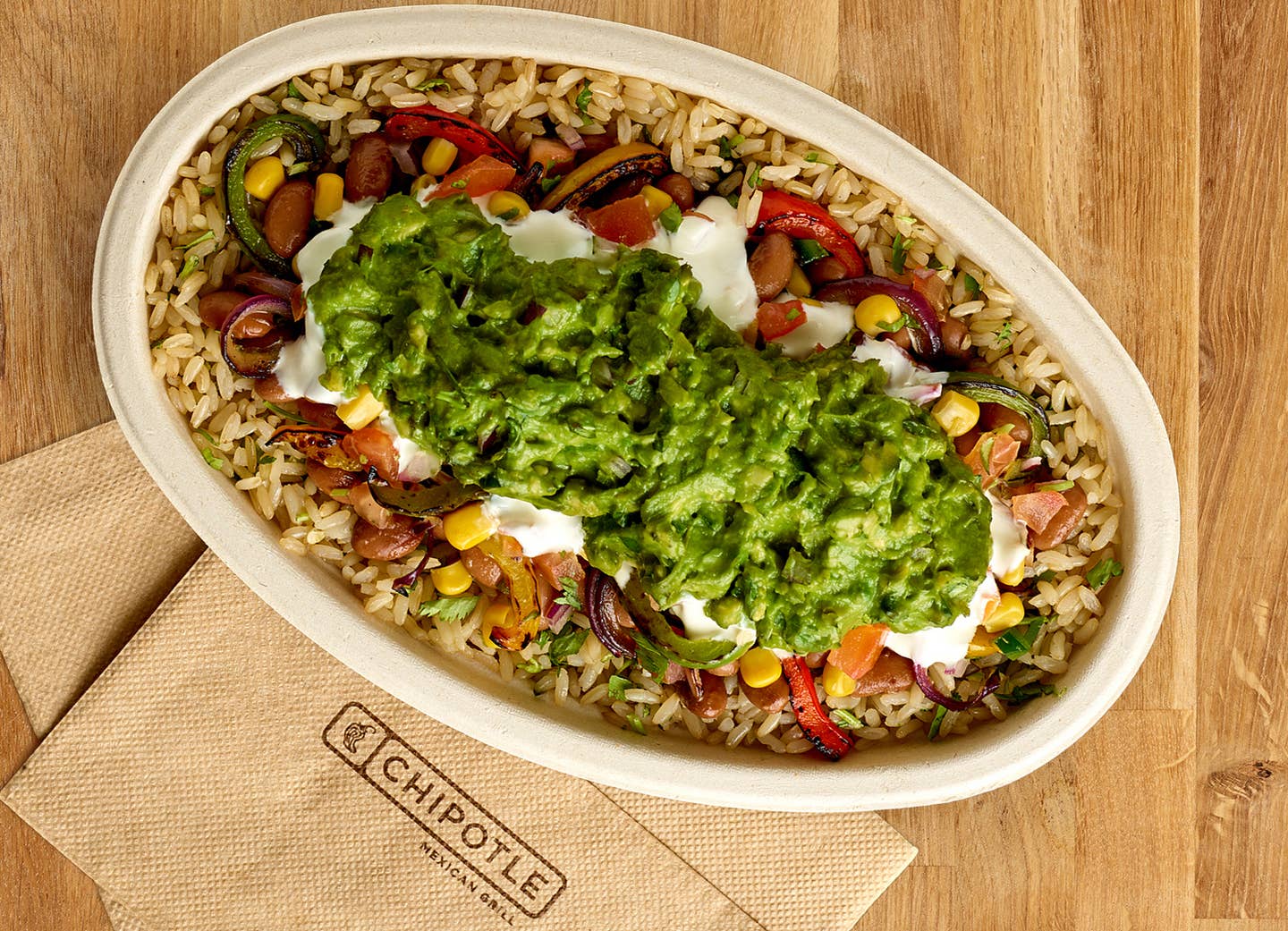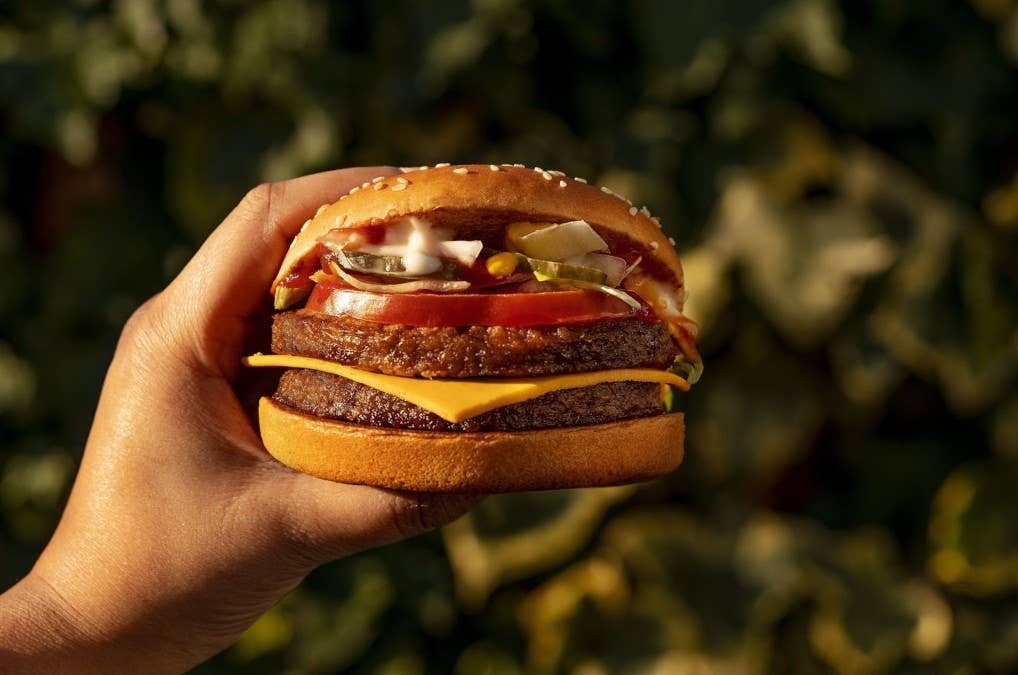
Meat Consumption Is Down in These Countries. Here’s What’s Happening
As climate change continues to become an even bigger cause for concern among savvy consumers who are linking their purchase choices at the store to contributions of CO2 and other greenhouse gases, the meat and dairy industries are finding themselves in the line of fire, since animal agriculture accounts for about one-third of all greenhouse gases produced by food production.
That spells trouble for meat producers and dairy makers alike since consumers in several countries are increasingly turning away from buying meat and dairy products and looking for more planet-friendly options, a new report finds.
Meat and Dairy Sales Are Declining Across Europe
About 55 percent of consumers today consider the sustainability of their food choices while grocery shopping. The trend of health-conscious and eco-minded consumers is rising all over the globe, and a new survey revealed that meat consumption is significantly declining among consumers across Western Europe.
The survey, commissioned by the Good Food Institute Europe, found that over 50 percent of consumers in Germany, Italy, Spain, and France have lowered their meat consumption within the last five years. As plant-based meat alternatives become more accessible in Europe, consumers have the option to choose a healthier, more environmentally sustainable option at the grocery store.
“It’s great to see plant-based meat become so strongly established in many people’s diets across Europe," Carlotte Lucas, Corporate Engagement Manager at the Good Food Institute Europe, said. "Companies now need to capitalize on this interest and invest in developing products that can truly compete with conventional meat on taste and price to provide the sustainable options Europeans want.”
The Good Food Institute Europe worked with OpionionWay to question 4,096 consumers across the four countries to understand emerging trends and purchasing habits regarding meat products. The survey found that over 60 percent of respondents felt that alternatives to animal-based meat and dairy products should be available in stores.
Europeans Are Dropping Meat and Dairy Products
The survey also discovered that more than half of all respondents felt that alternatives to animal meat must be found. When asked "Do you agree that alternatives to the production and consumption of animal meat must be found?" 71 percent of Italian respondents, 66 percent of Spanish respondents, and 60 percent of French and German respondents replied yes.
Consumers in Europe are also open to more sustainable alternatives than just plant-based proteins. The survey shows that 57 percent of Germans, 33 percent of French, 55 percent of Italians, and 65 percent of Spanish consumers revealed they are open to purchasing cultivated meat when the products become commercially available in Europe. The survey notes that younger people felt more inclined to try cultured meat in the future.
Among younger generations, plant-based or plant-centric eating is increasingly popular. Last year, another survey found that 54 percent of millennials are eating more plant-based, identifying as "flexitarians." The study noted that health was the main driver for the respondents looking to introduce more plant-based foods.
This new data accompanies a previous survey that found that 46 percent of respondents in Austria, Denmark, France, Germany, Italy, the Netherlands, Poland, Romania, Spain, and the UK have lessened their meat consumption.
Food as a Solution for Climate Change
Approximately 85 percent of the world's population is experiencing the effects of climate change now. With record-breaking monsoon rains, relentless heat waves, and prolonged droughts, research has highlighted how the animal agricultural industry is fueling environmental disasters. This month, UN Secretary-General António Guterres warned of climate "disaster" ahead of the United Nations' COP climate change conference.
Nearly 40 percent of methane emissions worldwide can be attributed to cattle production. UN researchers have claimed that the world must cut methane emissions by 33 percent by 2030, placing the responsibility on the meat and dairy industries. This year, the UN will host its first food-centric climate event with the help of ProVeg International. The Food4Climate Pavilion aims to educate guests on how to protect the planet beginning with food production and plant-based reform.
For more planetary happenings, visit The Beet's Environmental News.
11 Nuts With the Most Protein
1. Peanuts
Peanuts are actually not nuts—they're legumes which grow underground, so they are in the same family as chickpeas, soybeans and lentils. Crazy stunt: Scientists have made diamonds out of peanuts by putting them under enormous pressure. 1 ounce equals Protein - 7.31 g Calories - 161 Carbs - 4.57 g Fiber - 2.41 g Calcium - 26.1 mg
2. Almonds
Almonds are part of the cherry, peach, and mango family, since they are a drupe (a fleshy fruit with skin thin and central seed). When you eat a peach or mango, notice how the pit looks similar to an almond. There are over 30 different varieties and eight out of 10 almonds are grown in California. It takes over 1 gallon of water to produce a single almond, or 1900 gallons to grow 1 pound. 1 ounce equals Protein - 6g Calories - 164 Carbs - 6.11g Fiber - 3.5 g Calcium - 76.3mg
3. Pistachios
Pistachios are one of the oldest nut trees in the world. Humans ate pistachios as early as 7,000 B.C. They spread across the Middle East to the Mediterranean and were viewed as a royal delicacy. 1 ounce equals Protein - 5.72 g Calories - 159 Carbs - 7.7 g Fiber - 3 g Calcium - 29.8 mg
4. Cashews
Get ready, because November 23rd is National Cashew Day! The U.S eats over 90% of the world’s cashews. These tree nuts start out as apples. Harvesters then take the seed from the bottom of the apple and before the seed is roasted, it is usually green. Roasting or steaming the cashew neutralizes the oils and makes them safe to eat—meaning raw cashews aren't *truly* raw. 1 ounce equals Protein - 5.16 g Calories - 157 Carbs - 8.56 g Fiber - 0.936 g Calcium - 10.5 mg
5. Walnuts
Walnuts contain more Omega-3 fatty acids than any other nut, so they are an excellent brain food to boost memory (they even look like little brains!). To keep them fresher longer, store walnuts in the fridge or freezer, since they have a tendency to go rancid quickly. 1 ounce equals Protein - 4.32g Calories - 185 Carbs - 3.89g Fiber - 1.9g Calcium - 27.8mg
6. Hazelnuts
Hazelnuts contain healthy doses of fiber, folate and vitamin E. Hazelnut oil is so rich it's used in combination with palm oil for cleaning and polishing wood. We love them with dark chocolate. 1 ounce equals Protein - 4.24 g Calories - 178 Carbs - 4.73 g Fiber - 2.75 g Calcium - 32.3 mg
7. Brazil Nuts
It is illegal to cut down a Brazil nut tree, which live for up to 500 years. These are like the candy of the nut family since a cup has 876 calories, and each nut is 85% fat and 14% protein. They're rich in selenium, a mineral prized for thyroid support. 1 ounce equals Protein - 4.06 g Calories - 187 Carbs - 3.33 g Fiber - 2.13 g Calcium - 45.4 mg
8. Pine Nuts
Pine nut is another type of seed that is clumped in with the nuts. They are so expensive because they are tedious to gather. They grow in the pine cone, but you generally can't consume pine nuts from a pine cone you'd find in your park or backyard as not all pine nuts are edible. Most of the pine nuts you eat come from the stone pine tree in Asia, Europe and North America. 1 ounce equals Protein - 3.88 g Calories - 191 Carbs - 3.71 g Fiber - 1.05 g Calcium - 4.54 mg
9. Pecans
French people who settled in New Orleans created the first pecan pie, since pecans are native to the southern US. On average, 78 pecans are used in one pie. There are over 1,000 varieties of pecans, and many are named after Native American tribes. 1 ounce equals Protein - 2.6g Calories - 196 Carbs - 3.93 g Fiber - 2.72 g Calcium - 19.8 mg
10. Macadamia Nuts
Macadamia nuts are actually seeds. It takes 12-15 years for a macadamia tree to grow to its full size. Most of the world’s macadamia nuts come from Hawaii. They are high in carbs and protein, but keep these nuts away from dogs since they make them sick. 1 ounce equals Protein - 2.24 g Calories - 204 Carbs - 3.92 g Fiber - 2.44 g Calcium - 24.1 mg
11. Chestnuts
Chestnuts are the only nut that contains vitamin C. The trees were hit by blight in the nineties and 3 billion trees were eventually wiped out. Chestnuts are used in beer and cake and eaten creamed around the holidays. Chestnut flour is gluten-free, making it a great alternative for cookies, pies and stuffing. 1 ounce equals Protein - 1.19g Calories - 63.5 Carbs - 13.9g Calcium - 5.1mg
More From The Beet






